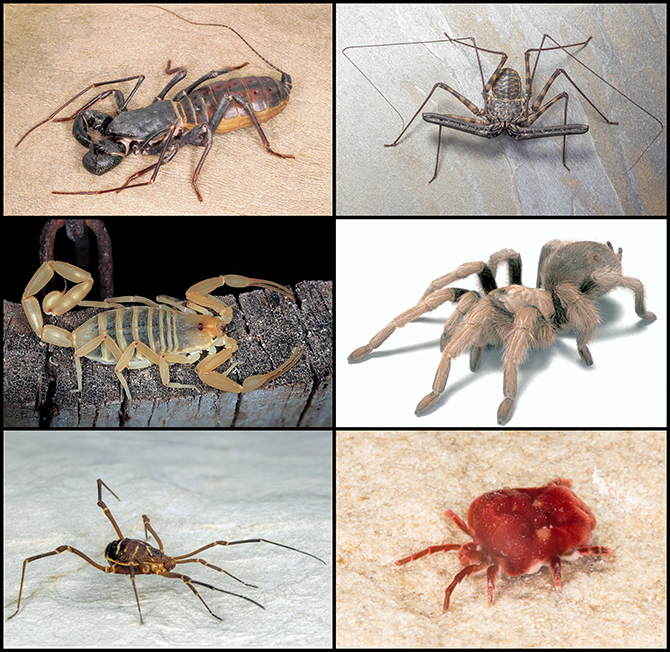Solifugid Relatives
[This section contributed by Paula E. Cushing]
Solifugae are in the kingdom Animalia, phylum Arthropoda, and class Arachnida. Arachnids include (depending on the researcher) 12 or 13 different orders. The order Solifugae is indisputably monophyletic (a well-supported evolutionary lineage within the class Arachnida) based on both molecular evidence (Siddharth et al. 2023) and on morphological characters found in no other arachnid including enormous two-jointed chelicerae, stalked, leaf-like chemosensory structures (malleoli or racquet organs) on the coxae and trochanters of the fourth pair of legs (Brownell & Farley 1974); prosomal stigmata; male cheliceral flagellae (Lamoral 1975); palpal coxal gland orifices; palpal suctorial organs (Cushing et al. 2005, Klann et al. 2008); opisthosomal ctenidia; a monocondylar walking leg joint between the femur and patella (Shultz 1989); and a highly developed tracheal system (Klann et al. 2005; Franz-Guess et al. 2016). These anatomical structures are illustrated and described in the Anatomy and Morphology page of this website. The order Solifugae is broadly related to other arachnid orders other members of the class Arachnida (illustrated below).

